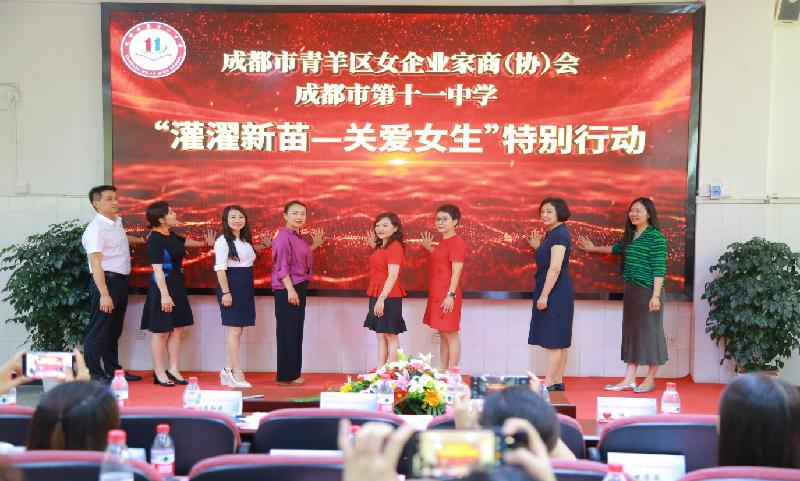The National Climate Center Wang Guofu: In some places, the summer and autumn drought, Sichuan and Chongfeng, etc. are alert to drought and flooding rapidly
Author:China News Weekly Time:2022.09.06

The first is to strengthen different standards
And accurate disaster recognition and assessment
And form a more timely and accurate warning
The second is to establish a brand new disaster prevention and mitigation thinking
Relevant departments must strengthen collaboration
Provide professional judgments for decision -making
At 18:00 on September 1st, the Central Meteorological Observatory reduced the orange warning of meteorological drought orange to yellow for many days. As of 18:00 on September 4, the Central Meteorological Observatory continued to issue meteorological drought yellow warnings. At 18:00 on August 30, the Central Meteorological Observatory lifted high -temperature yellow warning, and the large -scale continuous high temperature weather in the south basically ended. At the same time, the "thirsty" Yangtze River Basin finally ushered in rainfall. Meteorological experts remind that in the future, Sichuan -Chongqing and other places should be alert to the risk of secondary disaster risks caused by drought and floods and prevent prevention.
This summer, domestic droughts have experienced extreme high temperature weather and the entire Yangtze River. In the future, will "northern floods south drought" become the new normal in China? With the frequent occurrence of extreme weather events, will the forecast and early warning of meteorological disasters be more challenging in the future? Focusing on related issues, Wang Guofu, director of the Meteorological Disaster Risk Management Office of the National Climate Center, accepted an exclusive interview with China News Weekly.

Wang Guofu. Photo/Interviewee provided
In the future, the frequency, intensity or increase in China's drought incidents
China News Weekly: In response to the severe drought of the entire Yangtze River in the Yangtze River this year, in August this year, the Central Meteorological Observatory continuously issued meteorological drought warnings. This is also since 2013, the Central Meteorological Observatory issued a weather drought warning again. What is the background and main decision -making considerations of this drought warning? In your opinion, is the early warning?
Wang Guofu: drought is a process of slow development and gradual evolution, and must be sustainable. There may be some local precipitation in this process, but the central meteorological station must monitor the overall evolution situation of a large -scale drought. It is not only related to high temperature and rainy rain, but also related to the specific situation of the lower pads. Therefore, compared with high temperature, the effects behind drought are more, more complicated, and it is more difficult to issue drought risk warning. In 2019, the drought in the middle and lower reaches of the Yangtze River was also serious, but at that time, the meteorological department did not issue a national warning. In contrast to drought warning standards, since the flood in the flood, we have been closely monitoring the development of drought. Frankly speaking, it has been brewing and weighing every day for nearly half a month to issue warnings and when to issue it. At present, this drought warning is relatively timely.
China News Weekly: Behind the formation of large -scale drought this year, there is a global background of warming climate, and the abnormal atmospheric circulation is the main cause of drought in the middle and lower reaches of the Yangtze River and Sichuan and Chongqing region. In recent years, in the context of climate change, what are the characteristics of Chinese meteorological disasters?
Wang Guofu: Global warming has increased the frequency of extreme meteorological disasters, and meteorological disasters show the characteristics of long -term, sudden, great disaster, and complexity. The geographical conditions of the monsoon climate and the mainland have determined that my country is a country with severe meteorological disasters. In all natural disasters, direct economic losses caused by meteorological disasters accounted for more than 70 %. The "July 20" heavy rain in Zhengzhou, Henan last year, deepened this impression. Its direct economic loss was 120.06 billion yuan, and the affected population covered 150 counties (cities, districts), with a total of 14.786 million people affected by the disaster. Death disappeared 398 people.
China News Weekly: Studies have shown that the risk of extreme drought incidents in southern China in the future may increase further. Does the frequent occurrence of extreme meteorological disasters mean that my country ’s risk assessment, prediction and early warning of meteorological disasters is more difficult?
Wang Guofu: The frequency, strength and duration of China's drought in the future may increase, which is a general trend. However, there are also regional differences. Some traditional arid areas, such as the northwestern region, gradually warm and wet, instead of traditional arid areas that have become more drought. These are the characteristics of new regional climate change and the characteristics of meteorological disaster risk distribution. In addition to drought, it is also necessary to be alert to other extreme meteorological disasters, such as high temperature and rainstorm. Taking heavy rain as an example, in recent years, there are more and more short -term extreme precipitation like Zhengzhou "July 20". On the one hand, this type of extreme precipitation has caused major disasters. On the other hand, due to the short time and excessive strength, they cannot enter the groundwater cycle, and the water use efficiency is low. Essence
Global climate change has brought two challenges to monitoring, identification, early warning and defense of meteorological disaster risks: First, the occurrence of meteorological disasters is greater uncertainty, which requires us to strengthen disaster risks in different standards and accuracy in different standards and accuracy Monitoring identification and influence assessment, and form more timely and accurate early warning on this basis; the second is to increase the difficulty of disaster prevention and mitigation. Therefore, it is necessary to establish a new model and use new methods to face the new meteorological disaster risk management challenges brought about by climate change.

On August 25, the dried riverbed in the Jialing River in Chongqing. Figure/People's Vision
Disaster risk management must make overall professional judgments,
To make decisions
China News Weekly: What new models and methods are there to deal with future meteorological disasters?
Wang Guofu: Like this year's high temperature, the monitoring and evaluation of the National Climate Center shows that its comprehensive intensity has reached the strongest meteorological observation records in 1961, which began on June 13th. The "comprehensive intensity" here is a very new method. There was no such expression before, which means that the scope, duration, and average intensity of comprehensive consideration of the event is a multi -dimensional concept. This actually implies the connotation of meteorological disaster risk management. The so -called new model lies in the "three changes." On December 19, 2016, the State Council issued the "Opinions on Promoting the Reform of Disaster Prevention and Mergence System and Mechanism", which mentioned that we must work hard to achieve the transformation from post -disaster assistance to paying attention to pre -disaster prevention. Disaster losses have transformed to reducing disaster risks. For the meteorological department, the "three changes" ultimately realized goal is to change from simple meteorological element forecast and early warning to disaster risk management.
"Risk" mainly emphasizes disaster loss and its uncertainty. Traditionally, our work is to evaluate different weather factors such as temperature and precipitation and judge the future trend. But now, disaster risks are facing specific disasters, namely the subject affected by disasters, which mainly refer to the environment of human beings or its survival environment and the resources of its own.
The scientific connotation of disaster risk is the loss and impact of natural disasters on human society. Two factors are determined: one is natural factors and the other is an object that it affects. The rain falls, and the risk of meteorological disasters cannot be constituted. What is more important is to see the rain falling on? It is also heavy rain, falling in desert and sea, and in large cities, which has a completely different impact on human society.
At present, the Central Meteorological Observatory is more concerned about "influential forecast", which has changed significantly in the target of attention. The new method focuses on "What impact has the disaster weather"? That is, disaster and disaster events, disasters, and disasters, the disasters include the intensity, duration, and influence area of the event. These are dynamic changes. It is necessary to combine specific analysis of different disaster information.
Since 2020, under the unified leadership of the Census Office of the State Council, the China Meteorological Administration has organized the first national meteorological disaster comprehensive risk census at the four levels of the national-provincial-city-county. On the basis of the census work, the National Climate Center has established an objective, quantitative and refined comprehensive meteorological disaster risk assessment model. The key to the establishment of the model is the choice of different disaster factor weights. A disaster may have hundreds of disaster factors, and the demand for disaster reduction and disaster reduction in different regions may be more concerned about the wind, and some places are particularly sensitive to temperature. The choice of disaster factor weight must be specific to the county level. This is why the risk census must also be implemented to the county scale.
China News Weekly: What are the main challenges facing comprehensive meteorological disaster risk census and risk management?
Wang Guofu: The "comprehensive" here emphasizes the "comprehensive" in management, concepts and technology. At the management level, when conducting a risk census, we cannot rely on the meteorological department, but also need to coordinate multiple departments to share data. At present, in terms of data accuracy and multi -source data, there are still some challenges. However, this is a long -term and open work. In the later period, real -time data will be collected in the warehouse in business practice. After a few years, we will use rich samples to perform statistical analysis.
Disaster risk management is a cross -disciplinary discipline that not only involves atmospheric science, but also needs to understand the mechanism, distribution, evolution law and future trends of disaster formation, but also involves the impact, loss, and the effect of disasters, the governance of the country at all levels, Plan, etc., must have the concept of disaster chain. For a disaster, different forces on the chain must be comprehensively judged in order to provide more reliable services for national decisions.
China News Weekly: Specifically, how can the comprehensive risk assessment of disaster be better combined with subsequent emergency responses?
Wang Guofu: Disaster risk warning emphasizes impact. Based on the continuous improvement of the disaster information, the early warning of specific disaster may be issued in the future. For example, the risk of high temperature on human health will prompt areas with high risk in the future. The elderly or patients with weak physical tolerance in these areas need to pay attention to the preparation of heatstroke prevention and emergency medical treatment. In areas where crop growth has a significant impact, the area prepares corresponding drought resistance in advance according to the warning.
The main challenge in this process is the accuracy of the prediction, depending on the two aspects, one is the results of meteorological forecasting, which depends on the current weather and climate model forecasting ability.
On the other hand, the risk assessment model itself, there are still some technical problems in the model indicators. Sometimes when risk recognition and estimation are performed, the "air report" and the evaluation high -risk areas are too small and the low -risk areas are too large. Wait. In addition, the accuracy of risk estimates is not enough. On June 30, 2022, the Typhoon Siaba, which landed in Guangdong, used the model to successfully evaluate the risk of disaster, but afterwards, it was found that due to the insufficient accuracy of the model, some areas with affected losses were not recognized. The next step will continue to improve the recognition rate and accuracy of the model.
What's more important is to do a good job in the middle and long -term risk assessment. This is not only to draw a risk -level diagram, but also "explain" risks, such as the estimation of the influence area, cover population, and economic loss. This can be carried out in advance. Design of more accurate compensation mechanisms. For example, the dangerous distribution map of the low temperature of spring tea in Meitan County, Guizhou, is divided into four risk levels. Different risk areas correspond to different temperature indicators. For different temperature indicators, different insurance compensation amounts were set in advance, and the policy insurance rate was scientifically determined. Similarly, other regions can conduct risk assessments for different crops, and provide support for relevant government departments, insurance companies, and farmers participating in policy insurance. This is to "really use it" to evaluate the comprehensive risk of disaster. "Early quantity" for drought and flooding rush
China News Weekly: Recently, does the National Climate Center evaluate the risks of the middle and lower reaches of the Yangtze River and Sichuan and Chongqing in the next 30 days? What is the evaluation result?
Wang Guofu: The assessment of the risk of drought shows that in the next 30 days, due to the rainfall, the drought in the middle and lower reaches of the Yangtze River and the Sichuan -Chongqing region will occur in stages. However, due to uneven precipitation, summer and autumn drought will occur in many places. It is necessary to further pay close attention to the effects of summer and autumn drought on people's lives, industrial and agricultural production, forest fire insurance, water resources and power supply supply. In particular, we must strengthen the deployment and utilization of water resources and take measures to respond to drought resistance. At the same time, my country has a vast acuity, there are many types of climate, and there are many types of disasters. Many areas often have the characteristics of "drought and flooding": according to the forecast of the National Climate Center, this year, the strength of the West China Autumn Rain may be stronger than the same period of the year. It has a disadvantage of the domestic and northern parts of China West China.
China News Weekly: Recently, many experts believe that the phenomenon of "South Drought and the North" this year has appeared. In the future, will this become a new normal in China? How should we deal with it?
Wang Guofu: The so -called "South Drought and North Water" actually refers to a non -traditional meteorological characteristics, but it is not accurate to different years, seasons and regions. For example, since this year, there are two rain belts in the north and south of my country, and the Jianghuai Basin, Henan, and southern Hebei in the central part have high temperature and drought. In the first half of this year, there were a total of 19 regional storms nationwide, of which 18 were in the south. While we talk about the strong disaster and weighing, while the frequency is high, we must pay more attention to regional differences. In addition, this year's high temperature has also appeared different from previous years. Not only is the overall strength, the scope of influence is large, and the duration is long, but the temperature of the night in many places also reaches 33 ° C and above, which is relatively rare.
Therefore, in the context of climate change, new non -traditional weather characteristics and continuous intensified disaster risks, relevant departments in various places must effectively establish new disaster prevention and mitigation thinking, truly have a sense of identification of meteorological disaster risks, constantly update and develop risk assessment models To adapt to new changes. For example, the risk recognition of drought and flooding is difficult, because the development is too fast. In this situation, local governments must "make a good amount in advance", make a good plan and adjust dynamically in a timely manner, and respond rapidly.
Send 2022.9.5 Total Issue 1059 "China News Weekly" magazine
Magazine title: National Climate Center Wang Guofu: Disaster risk management must face specific disaster objects
Reporter: [email protected])
Edit: Du Wei
Operation editor: Wang Lin
- END -
Harbin September 14th, the highest temperature on September 14
Harbin Meteorological Observatory released on September 14th to the 14th to the city weather forecast on the 14th to night:Daily on the 14th: the city is sunny; the north wind is 2 to 3; the maximum t
"Chengdu" Green Sheep Women Entrepreneurs Chamber of Commerce launched a special action of "irrigation new seedlings and caring for girls"

Recently, the Qingyang District Female Entrepreneurs Chamber of Commerce and Cheng...